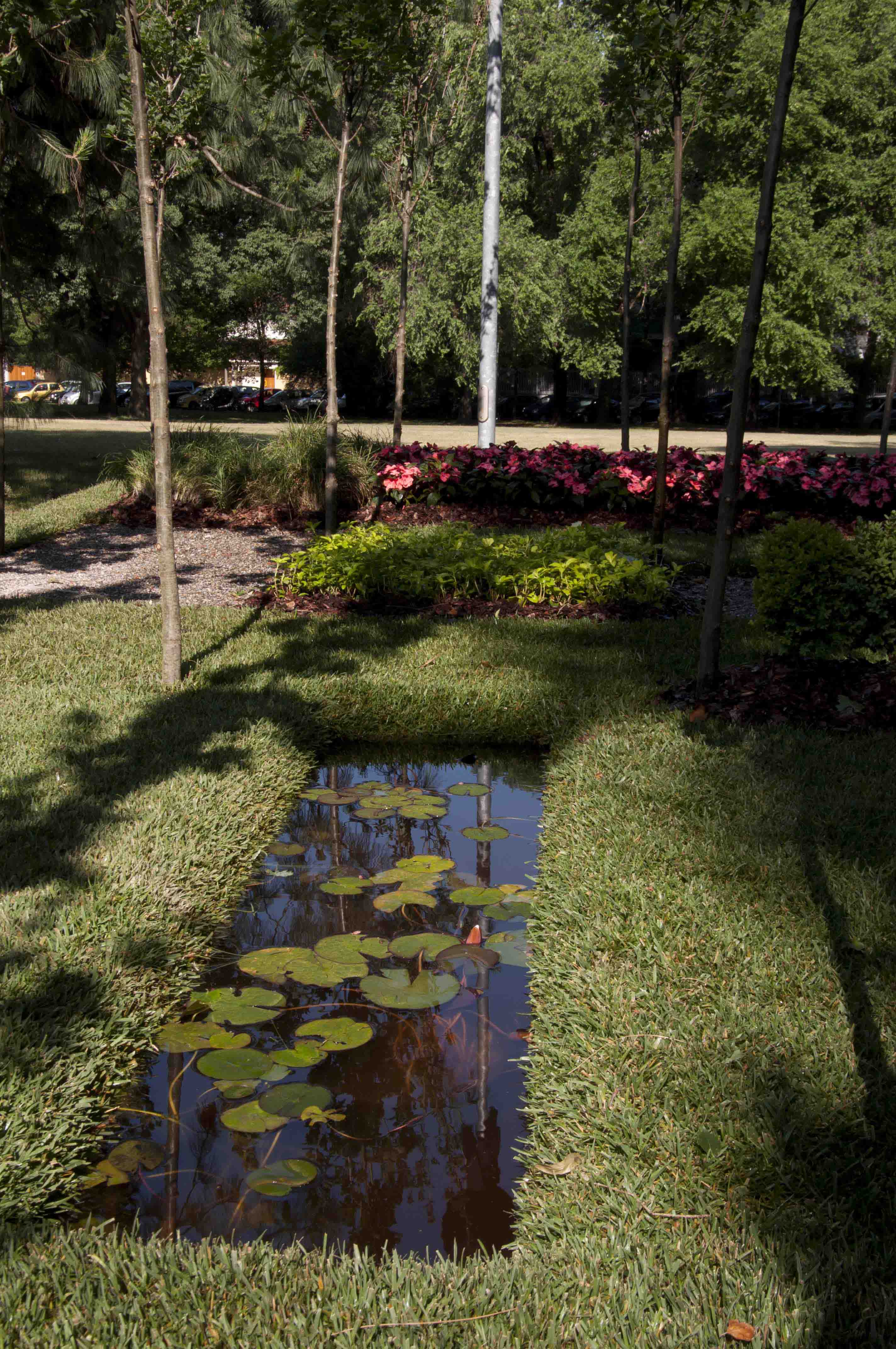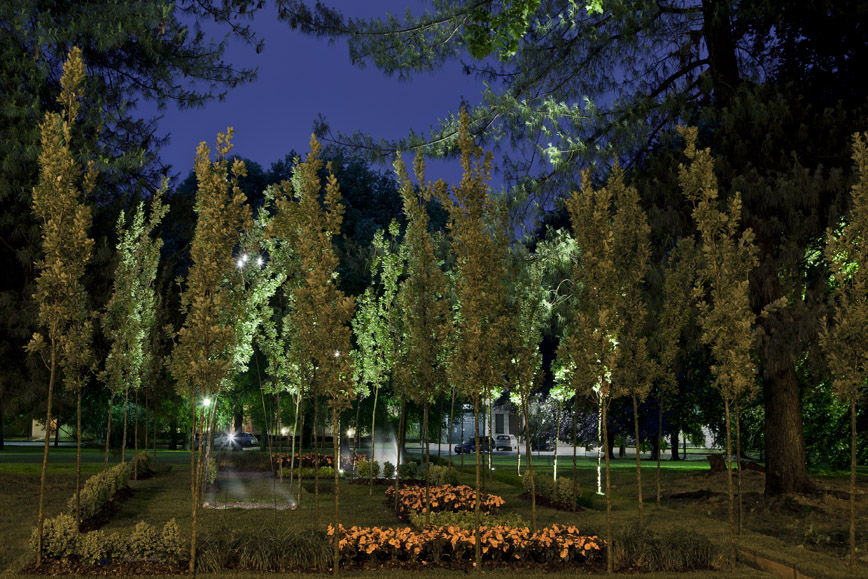Urban Labyrinth
This contemporary garden rebuilds the historical and natural landscape of the Pianura Padana. It refers to the “genius loci” of its context and it uses, reinterpreting them, types, arboreal essences and materials.
The landscape of the Pianura Padana since centuries is characterized by a set of grassed areas and fields cultivated in close relationship to agricultural activity, capillary irrigated by canals and irrigation channels, typically surrounded by low bushes and climbing plants floating on the surface of the water: fields connected by local roads shaded by continuous rows of poplars.
Frequently meadows and fields are integrated both with poplar areas, characterized by a geometric plot planting, and, near the rural settlements, with regular wooden structures for the support of fruit trees.
This garden is inspired by both the geometric patterns of the territories of the plain and the tradition of monumental and urban gardens.
It is a garden composed of vegetal architectural elements, also polychrome, designed in the context of the best Italian tradition.
Inside the labyrinth, a particularly mysterious and intriguing compositional element, the water is collected in basins with aquatic plants and, sprayed in vegetable enclosures, refreshes nicely and recalls the mists of the winter seasons.
- Project: Luigi Ferrario








